For a kid who never cared one way or the other about Cinderella stories, I saw a lot of them. Part of this can be put down to my all-consuming need to devour any movies, television shows, books, or other forms of media left within four feet of me. But the rest is actually not because of me. The real reason I have seen just about every adaptation of Cinderella ever conceived is because of my mother.
I don't actually know if my mom really loves the Cinderella story or if it's convenient for its widespread appeal, but when I was younger she did an experiment. First we rented every copy of Cinderella we could find that was even vaguely child-appropriate. Then we borrowed all the Cinderella books from the library. And then we had a massive marathon of every single iteration of the Cinderella narrative that we could find. Why? So that my mother could show me (and my friends) how some stories are shifted across cultures and how there are certain similarities in our myths.
My mom is really smart.
The Slipper and the Rose was kind of dull and confusing and the Disney Cinderella was one of the few that I actively disliked. The original Rodgers and Hammerstein Cinderella was just okay, while the Faerie Tale Theater Cinderella with Jean Stapleton as the Fairy Godmother was cheesy goodness.
But out of all the movies we watched in that epic marathon, my favorite then and now was the 1997 Rodgers and Hammerstein remake, the one starring Brandy and Whitney Houston and Bernadette Peters. Why? Because it was light and fluffy and fun and had awesome songs sung by fantastic musicians. Because it was gleefully silly and unashamed of its source material. Because I related to this Cinderella and I totally thought the Prince was cute and sweet enough to deserve her.
Because it's one of the only Cinderellas I just listed where the Cinderella isn't white.
Granted, as a kid I really wasn't aware of that logic. I could tell that Cinderella was black, obviously, but I didn't think anything of it. I didn't question why the King (Victor Garber) was white and the Queen (Whoopi Goldberg) was black and their son Prince Christopher (Paolo Montalban) was Filipino. It didn't even occur to me that this is not how genetics work. I didn't know what genetics were.
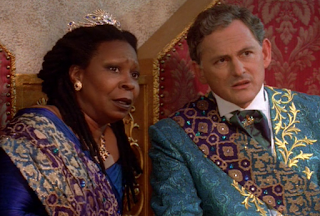 What I'm saying is that as a kid, the colorblind casting in this movie didn't bother me one bit, nor should it have. As an adult, however, the colorblind casting doesn't bother me, but it does freaking amaze me. In retrospect, this version of Cinderella might just be one of the single most subversive pieces of media I saw as a child. I'm really not kidding. It was one of the first times that I, a middle-class white child living in a predominantly white town, saw a whole bunch of people of color on the screen being accepted and treated as equals. That made an impact. A big one.
What I'm saying is that as a kid, the colorblind casting in this movie didn't bother me one bit, nor should it have. As an adult, however, the colorblind casting doesn't bother me, but it does freaking amaze me. In retrospect, this version of Cinderella might just be one of the single most subversive pieces of media I saw as a child. I'm really not kidding. It was one of the first times that I, a middle-class white child living in a predominantly white town, saw a whole bunch of people of color on the screen being accepted and treated as equals. That made an impact. A big one.So while the story is absolutely cheesy and silly and ridiculous and the songs are the ones we've all known since the 1950s, I think that when we get down to it, the 1997 made-for-TV Cinderella might just be the best possible version of the story out there.
Allow me to prove my case.
Normally when you have a production that touts "colorblind casting", it means that the production is diverse, but it rarely actually means colorblind. People are still cast with like-raced people to play family members and there's a level of awareness about race. This can be super good - look at Hamilton's commitment to making sure that people of color play all the main roles - and not so good - look at how some sitcoms avoid mentioning race ever exists despite having a person of color in a main role.
What makes this Cinderella really distinct in its colorblind casting, then, is how genuinely blind the casting is. Brandy Norwood plays Cinderella, which is only appropriate because she is beautiful and sweet and can sing really well. But then Bernadette Peters plays her Stepmother, and her two stepsisters are played by Veanne Cox and Natalie Desselle Reid - two women who are hilarious but look absolutely nothing alike. The casting in this movie is all about casting the actor who makes the most sense individually in the role and not worrying about people getting confused.
So we got the aforementioned royal family who don't seem to make sense in our world, but who are unquestioned in theirs. Whitney Houston plays the Fairy Godmother, because why wouldn't she? Jason Alexander pops up as a beleaguered servant. The only rule seems to be that the actor fits the role and that's that.
What this does is create a fantasy world where race as we understand it doesn't exist. This even stretches out to the crowd scenes - if you look closely, the crowds are very intentionally full of people of color. In this kingdom and seemingly in this world, race doesn't work like it does in ours. It's just a matter of aesthetics - you happen to look different than your parents and no one cares or questions it. The evil Stepmother might be horrible and awful, but she never says anything about Cinderella's braids or her own daughter's dark skin. Race just isn't a thing.
This is different than other "colorblind casting" cases where the story supposedly takes place in a world where race isn't a thing, but the main actors are all white and it's just some side characters who happen to be people of color. I hate to crap on it, but the 2015 Cinderella is guilty of this, much as it does an excellent job with most of the rest of the story.
No, this Cinderella is one where race just plain doesn't exist, freeing us up to just enjoy the story. It's also worth noting that this isn't a film where race doesn't exist because everyone is acting white. As I mentioned before, Cinderella has braids and she's still the most beautiful woman anyone's ever seen. The Fairy Godmother has her hair out and natural and free and it's amazing. The Queen has locs. This is a world where race doesn't exist, but neither is it entirely erased. I'm sure that in one of the crowd scenes I saw an Indian woman in an evening gown styled like a sari.
Race is a big deal in this story because it's not a big deal in the story. Because the color of the characters' skins is treated as entirely incidental and unrelated to the story, we the audience are allowed to just appreciate the wacky hijinks that ensue. But because the actors are allowed to still look like themselves and to acknowledge their heritage, we get a world that really is balanced and fair in its treatment of race. And that's no small thing.
Obviously it doesn't hurt that the cast of this movie is freaking fantastic - Brandy is a phenomenal Cinderella, while Whitney Houston is having way too much fun as a Fairy Godmother. Whoopi Goldberg and Victor Garber seemed to have been having a competition to see who could make the other one break out laughing first, and Paolo Montalban does an excellent lovesick gaze.
Oh and Jason Alexander and Bernadette Peters were chewing the scenery as hard as they could while Veanne Cox and Natalie Desselle Reid kept one-upping each other with ridiculousness. It's cute and fun and totally worth watching for that alone.
But as a kid, I can't help remembering how happy I was to watch this movie where everyone looked so different but no one minded. I think that when we talk about kids' media it's easy to think that any time we bring up race it has to be in a conversation about race.
I mean, we want our kids to understand about racism and be conscious of the world around them and have good opinions, right? It's easy to forget that a lot of good is done just by reminding our kids and ourselves that race is a social construct. It is, in fact, not inherent in us or in our perception of the world.
I'm all for children's media that talks about race as it exists in America today. But I'm also a fan of media that imagines a world where race isn't a thing. Not a world that's entirely white - either in skin color or in culture - but a world where race is disconnected from racism. A world where Cinderella is black and her Fairy Godmother is black and the Queen is black and the Prince is Asian and no one cares or even mentions it. A genuinely colorblind world.
As a kid, all I saw were pretty ballgowns and funny jokes. As an adult, I'm so glad that's all I saw. I genuinely believe that seeing this movie made me a better person as a child. That's all I'm really getting at here.
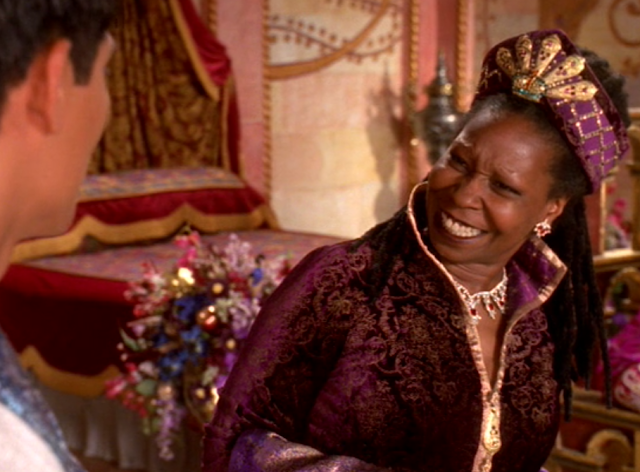 |
| Whoopi Goldberg and Victor Garber are hardcore relationship goals in this movie. |


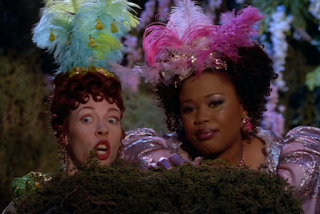
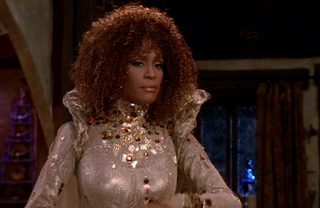
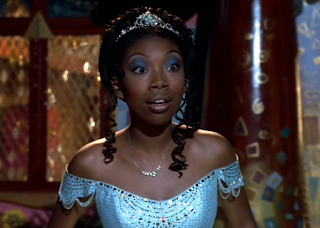

KOLKATA COLLEGE ESCORTS
ReplyDeleteKOLKATA INDEPENDENT MODEL ESCORTS
KOLKATA CALL GIRLS ESCORTS
KOLKATA CHEEP ESCORTS
KOLKATA CALL GIRLS NUMBER ESCORTS
KOLKATA HIGH PROFILE ESCORTS
KOLKATA AIRHOSTESS ESCORTS
KOLKATA PARK HOTEL ESCORTS
KOLKATA PARK HOTEL ESCORT
KOLKATA FIVE STAR ESCORT SERVICE
KOLKATA HOUSEWIFE ESCORT SERVICE
KOLKATA BOUDHI ESCORTS
INDEPENDNET ESCORT IN KOLKATA
KOLKATA ESCORT AGENCY
RUSSIAN ESCORT
RUSSIAN ESCORTS
RUSSIAN CALL GIRL
RUSSIAN CALL GIRLS
HOUSEWIFE ESCORT
HOUSEWIFE ESCORTS
HOUSEWIFE CALL GIRLS
HOUSEWIFE CALL GIRL
MODEL ESCORT
MODEL ESCORTS
COLLEGE CALL GIRL
COLLEGE CALL GIRLS
INDEPENDENT ESCORT SERVICE
INDEPENDENT ESCORTS SERVICE
INDEPENDENT ESCORTS SERVICES
INDEPENDENT CALL GIRL
INDEPENDENT CALL GIRLS